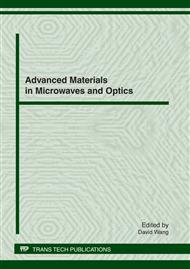p.540
p.545
p.550
p.556
p.562
p.569
p.574
p.579
p.586
Method of Remote Sensing Image Fine Classification Based on Geometric Features and SVM
Abstract:
In order to overcome the phenomenon of foreign bodies in the same spectrum in remote sensing images, as needs of land-use surveys, traditional methods often can’t get good results. In this paper, an efficient method for dividing the classifying results of traditional methods into further items is proposed and studied. Our approach to remote sensing image fine classification is based on both geometric features and SVM. By making full use of geometric features in the structure of property characteristics, we produce rules of the morphological characteristics and distribution. With deductive reasoning, we further classify the classifying results of SVM classifier. Tests showed that the method can be better broken down into the waters of rivers, lakes, reservoirs and ponds.
Info:
Periodical:
Pages:
562-568
Citation:
Online since:
January 2012
Authors:
Price:
Сopyright:
© 2012 Trans Tech Publications Ltd. All Rights Reserved
Share:
Citation:


